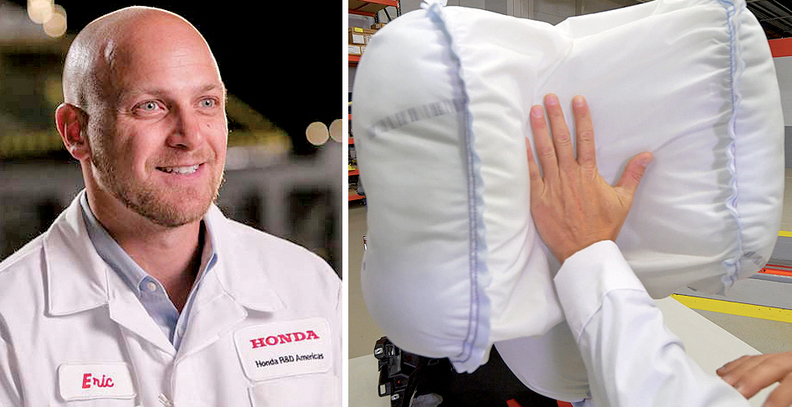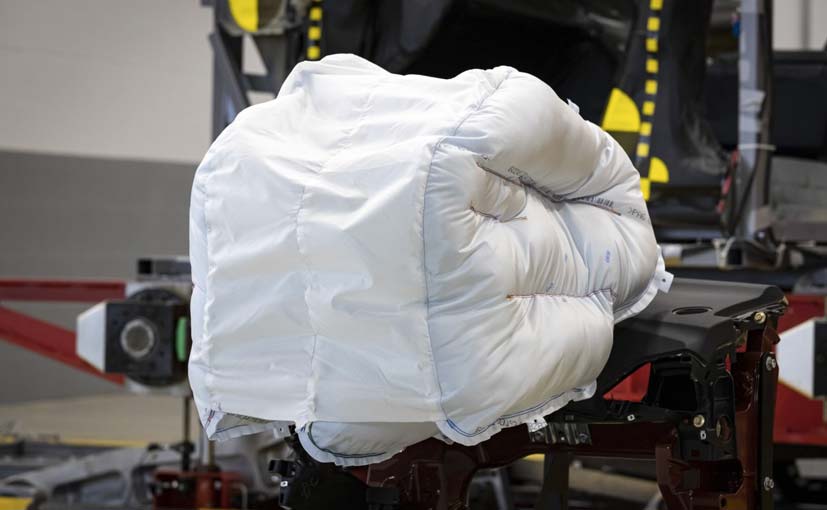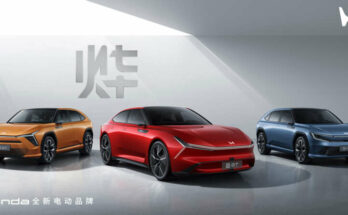Honda has announced the development of a new passenger front airbag technology which has been designed to better protect occupants in a wide range of frontal collisions. Honda plans to begin applying its airbag design to new products in the United States in 2020.
The development and testing of the new airbag was led by engineers at Honda R&D Americas, Inc. in Ohio in partnership with Autoliv, one of the company’s safety systems suppliers. The new design is particularly beneficial in angled frontal impacts in which lateral collision forces can cause an occupant’s head to rotate severely or slide off the airbag, increasing the chance of serious injury.
Unlike conventional airbag systems that rely on a single inflatable compartment, the new system utilizes three inflated compartments – a center chamber and two outward-projecting side chambers that create a wide base across the dash – along with a sail panel that stretches between the two side chambers at their outermost edge. Operating something like a baseball catcher’s mitt, the sail panel catches and decelerates the occupant’s head while also engaging the side chambers, pulling them inward to cradle and protect the head, mitigating the potential for injury.
Jim Keller, President of Honda R&D Americas, Inc, said:
“This new airbag technology represents Honda’s continuing effort to advance safety performance in a wider variety of crash scenarios and reflects the innovative thinking that our engineers are bringing to the challenge of reducing traffic injuries and fatalities.”

Honda’s engineer Eric Heitkamp who’s working on the new airbag tech, said:
“Looking at the real-world data, we can tell that over 56% of these real-world crashes have some level of angled impact. I mean, it’s not straight into a wall or to a tree or something. So we recognized that we need a restraint system that can improve at the angle-type collisions.
With the new design, we can better manage lateral forces that are coming into the airbag system, and we’re able to provide a better restraining system from the airbag.”
Honda also is working to develop and deploy advanced active and passive safety systems that can reduce the severity of a collision or help avoid it entirely. In addition to passive safety systems such as airbags, seatbelts and advanced crash safety structures like the company’s Advanced Compatibility Engineering (ACE) body structure, Honda is aggressively deploying its Honda Sensing and AcuraWatch suites of safety and driver-assistive systems. The company has committed to making this broad suite of technologies standard on nearly all of its vehicles by 2022.

A computer animation professional with over 23 years of industry experience having served in leading organizations, TV channels & production facilities in Pakistan. An avid car enthusiast and petrolhead with an affection to deliver quality content to help shape opinions. Formerly written for PakWheels as well as major publications including Dawn. Founder of CarSpiritPK.com





